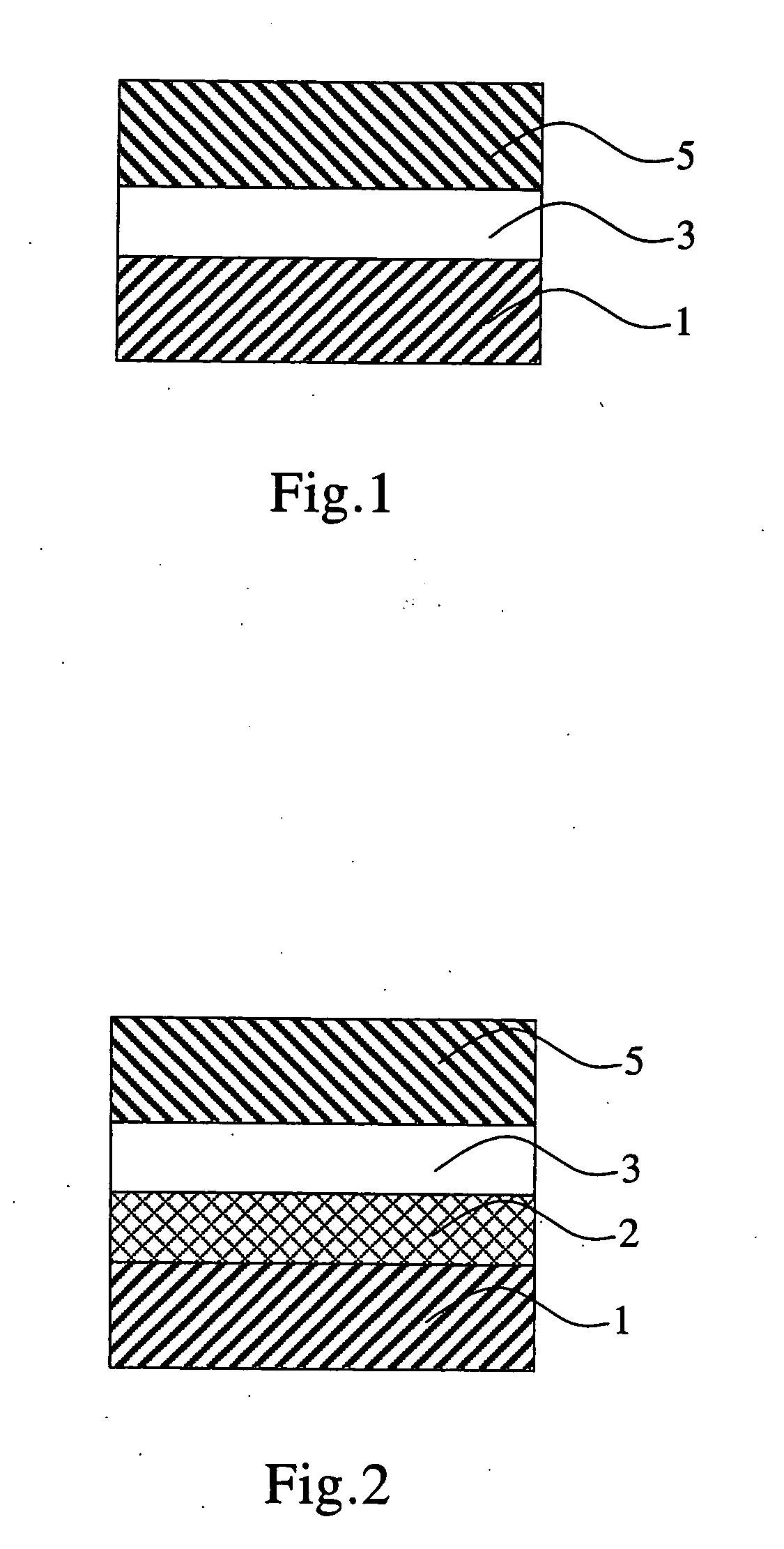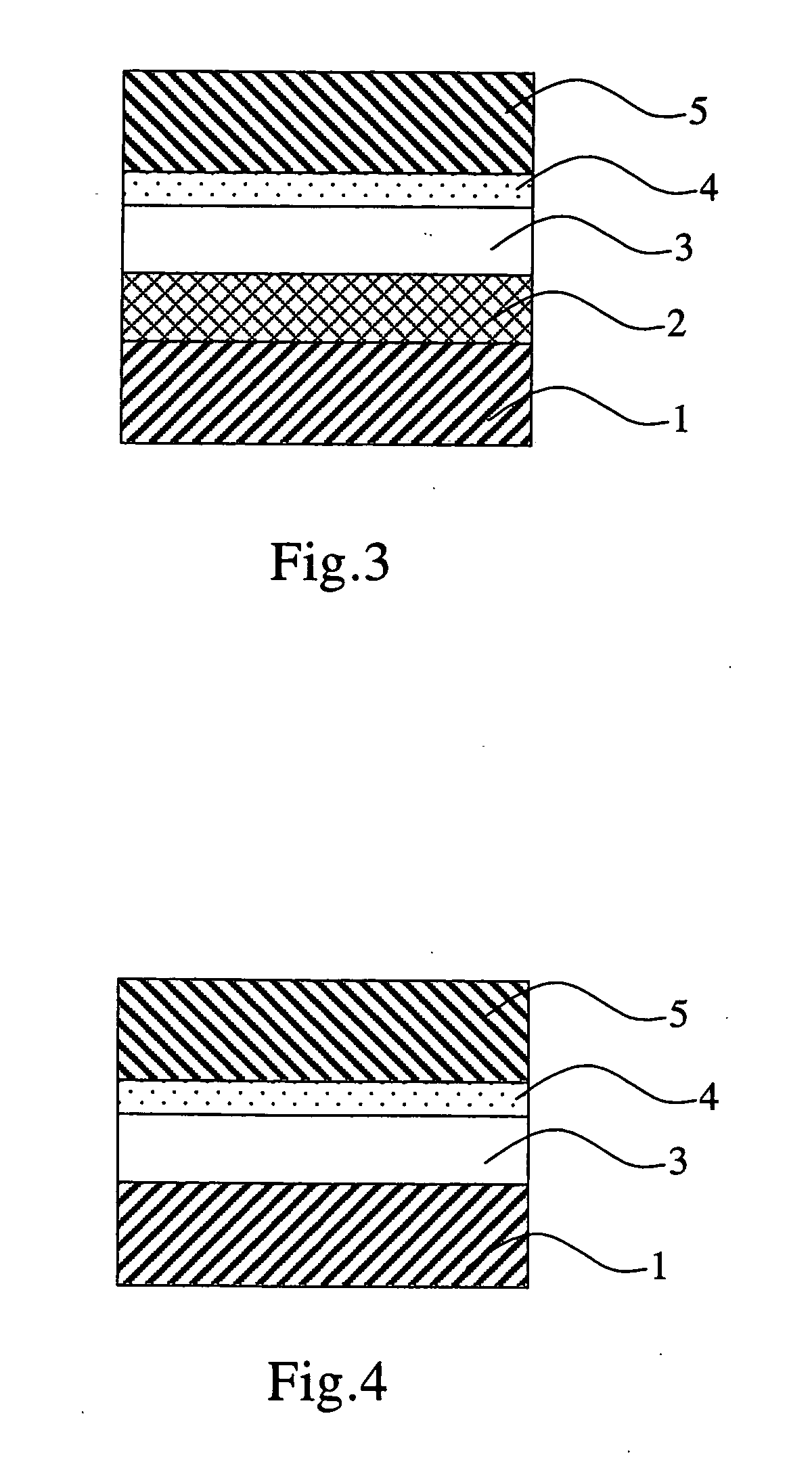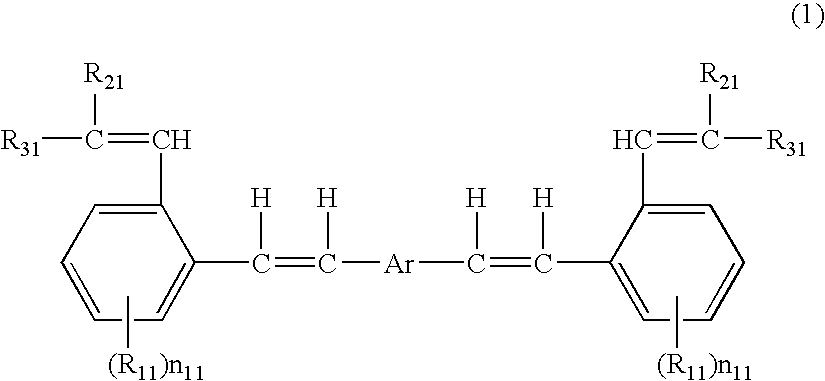Aromatic methylidene compound, methylstyryl compound for producing the same, production method therefor, and organic electroluminescent element
a technology of methylstyryl compound and methylstyryl compound, which is applied in the direction of organic semiconductor devices, discharge tube/lamp details, natural mineral layered products, etc., can solve the problems of low brightness, low brightness, and element not widely used in practical use, and achieve high brightness and high durability
- Summary
- Abstract
- Description
- Claims
- Application Information
AI Technical Summary
Benefits of technology
Problems solved by technology
Method used
Image
Examples
example 1
Production of Compound No. 1-02 (#1)
1.07 g of tetraethyl 1,2-dimethylnaphthalene-α,α′-diyl-diphosphonate and 1.42 g of 2′-formyl-α-phenylstilbene were dissolved in 10 ml of N,N-dimethylformamide. At 5 to 10° C., 0.65 g of potassium tert-butoxide was gradually added to the reaction over 10 minutes. The reaction mixture was then stirred at room temperature for 24 hours. 10 ml of ethanol and 10 ml of water were then added. The precipitate was recovered by filtration, washed with water and then dried to obtain 1.52 g of pale yellow powders.
The pale yellow powders were then subjected to column chromatography with silica gel as a stationary phase and mixture solvent of toluene and hexane (volume ratio 1:3) as a mobile phase, to obtain a pale yellow glass substance. The substance was then re-crystallized from the mixed solvent of chloroform and ethanol, and vacuum dried at 100° C. to obtain 0.84 g of yellow glass having a strong fluorescence (yield 49%). The elementary analysis of thi...
example 2
Production of Compound No. 1-02 (#2)
3.04 g of diethyl diphenylmethylphosphonate and 1.94 g of 1,2-bis(2-formylstyryl)naphthalene were dissolved in 30 ml of N,N-dimethylformamide. At 5 to 10° C., 1.30 g of potassium tert-butoxide was gradually added to the reaction over 10 minutes. The reaction mixture was then stirred at room temperature for 20 hours. 80 ml of ethanol and 25 ml of water were then added. The precipitate was recovered by filtration, washed with water and then dried to obtain pale yellow powders. The pale yellow powders were treated in the same way as in Example 1, to obtain compound No.1-02.
example 3
Production of Compound No. 1-02 (#3)
0.921 g of 1,2-diformylnaphthalene and 4.06 g of diethyl 2-(2,2′-diphenylvinyl)benzylphosphonate were dissolved in 30 ml of N,N-dimethylformamide. At 5 to 10° C., 1.30 g of potassium tert-butoxide was gradually added to the reaction over 10 minutes. The reaction mixture was then stirred at room temperature for 20 hours. 80 ml of ethanol and 25 ml of water were then added. The precipitate was recovered by filtration, washed with water and then dried to obtain pale yellow powders. The pale yellow powders were treated in the same way as in Example 1, to obtain compound No.1-02.
PUM
 Login to View More
Login to View More Abstract
Description
Claims
Application Information
 Login to View More
Login to View More - R&D
- Intellectual Property
- Life Sciences
- Materials
- Tech Scout
- Unparalleled Data Quality
- Higher Quality Content
- 60% Fewer Hallucinations
Browse by: Latest US Patents, China's latest patents, Technical Efficacy Thesaurus, Application Domain, Technology Topic, Popular Technical Reports.
© 2025 PatSnap. All rights reserved.Legal|Privacy policy|Modern Slavery Act Transparency Statement|Sitemap|About US| Contact US: help@patsnap.com



